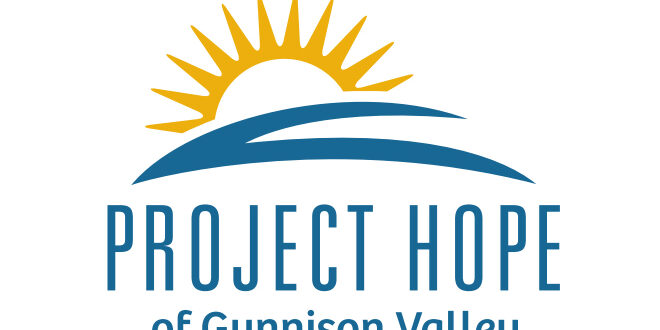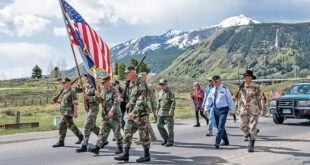SART team hopes to go live this year
[ By Katherine Nettles ]
Project Hope has been a beacon of support for many Gunnison County and Hinsdale County residents since its earliest iterations beginning in 1984 with a safe house for battered women. The non-profit organization has changed shape and locations over the years, but continues to support the Gunnison Valley in a variety of ways. In addition to offering support services like shelter and housing transition assistance for domestic violence victims and providing counseling services and referrals, a new sexual assault response team (SART) is taking shape to respond to the specific needs of sexual assault victims, and increase community awareness. After some COVID delays, the team hopes to be ready for deployment within the year.
“Around 75% of all cases we get are related to domestic violence and about 25% are related to sexual assault,” says Project Hope executive director Jessica Wurtz. Wurtz has been with Project Hope for more than four and a half years, having started with outreach. She is now also the lead facilitator for the SART project.
The concept of a SART is not exactly new to the Gunnison Valley. Wurtz credits detective Chris Danos with the Gunnison Police Department with bringing the idea forward most recently, but Danos himself recounts the history of a sexual assault response team beginning with a student group at Western Colorado University in the 1990s, of which Gunnison resident Connie Carter Smith had been a big part. Danos says the response team formed in regard to what was generally considered date rape. “We weren’t having stranger sexual assaults; it was people not taking no for an answer,” he says. The group started a campaign in 2006 identifying that sexual assault most often occurs between acquaintances.
“We were talking about establishing boundaries and telling people to get involved and to speak up,” says Danos, which he emphasizes is still relevant today. “This is something that professionals in this valley have been working on for a long time,” he says. “The whole purpose of the team is to make us better at what we’re doing for the victims.”
Like so many plans, the newest SART plans were curtailed when the pandemic hit and resurfaced in 2021.
Wurtz says that during the early months of COVID when most people were on lockdown, “It was disturbingly quiet at Project Hope. It was almost eerie.” Then in June as restrictions lifted a bit, she says, “We just skyrocketed.”
Prior to COVID, Wurtz says they had five to six cases per month on average. “We had triple that number by late summer and fall of 2020. And we have not come back down to those original numbers. We are still almost double, with about 10 domestic violence cases reported per month.” And while sexual violence reports had tapered off for a while during the early stages of the pandemic, they are now showing up again.
“It’s definitely an issue even in our small paradise community,” says Wurtz. Challenges within Gunnison and Hinsdale counties, she says, are similar in any small rural area where many people are well acquainted with each other. “Feeling a lack of confidentiality among people they know can be really scary for victims,” she says. At the same time, the opposite can be true if people have a good support network in the community and they feel they have a voice. “But the reporting process can be really painful for victims,” says Wurtz, from the required law enforcement questioning to intrusive forensic exams to the trial process that often takes up to two years. “The system is not set up to be easy on victims.”
To address that, the SART vision is to “transform trauma for a healthy community.” Wurtz has invited a multidisciplinary collection of agencies and individuals to be part of the team. This includes the district attorneys of the 7th Judicial District, the behavioral health department at Gunnison Valley Health, Gunnison County Health and Human Services, Western Colorado University’s Title IX coordinator and Gunnison Watershed School District counselors. The team meets monthly, and has focused first on training its members using old case reviews to prepare for the work ahead and set up protocols for collaborating.
The mission: “to improve the prevention, response and coordinated care of sexual violence victims through a culturally sensitive, victim-centered, multidisciplinary approach that promotes victim healing, offender accountability, and community awareness.”
As Wurtz describes it, this care network could share a wide range of resources with victims, offer assistance and addresses challenges that the justice system presents for them. For example, one goal is helping minimize the number of times a victim has to tell their story. Another is to move examination rooms out of the hospital to a more private place “that’s more trauma informed,” explains Wurtz, and where a victim would not be at risk of encountering a bustling hospital with visitors or staff members who may know them.
“We are in the very early stages of this, and who knows if it will work. But if we hear about a practice that is more aligned with those needs, it would be helpful,” says Wurtz.
The team’s community outreach to raise awareness and prevention includes a focus on youth and teens. “There can be a lack of awareness around consent and knowing what healthy relationship patterns look like,” explains Wurtz. There is also the constantly changing landscape of digital media, which prompts issues with texting, sexting and sending or soliciting photos in different apps.
“We’re sort of always playing catch up there,” says Wurtz.
Project Hope has also been growing alongside its increasing caseloads, providing exponentially more financial help, shelter nights and therapy to victims than ever—and the need for transitional housing has tripled.
Wurtz says the biggest need now, as the SART gets on its feet, is for volunteers to help with the crisis line. “We have a small staff, like most non-profits. And for them to do advocacy work all day, and then ask them to go home and take on a crisis line at night, that can be too much.” More information about volunteering and volunteer forms are available at hope4gv.org
Wurtz hopes the SART team will be ready to assist individuals within the next year. In the meantime Project Hope continues to provide services for all victims of assault, no matter what type. More than anything, Wurtz says, “We just want people to know we’re there.”
As always, the crisis line is available 24/7 at 970.275.1193.
 The Crested Butte News Serving the Gunnison Valley since 1999
The Crested Butte News Serving the Gunnison Valley since 1999





